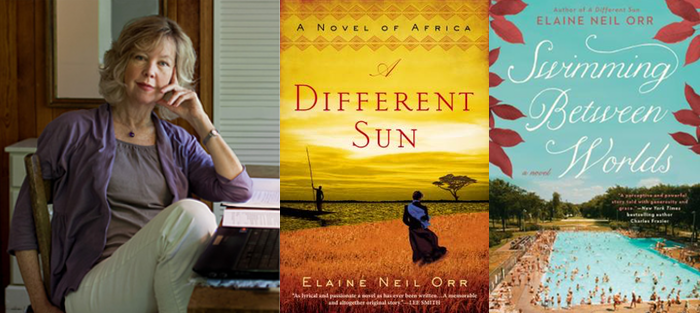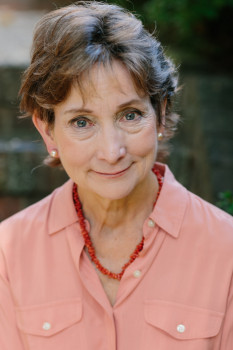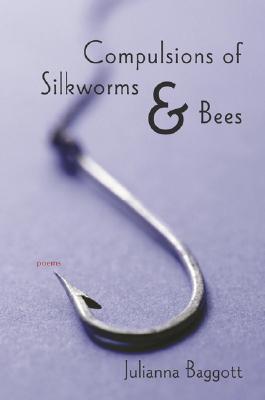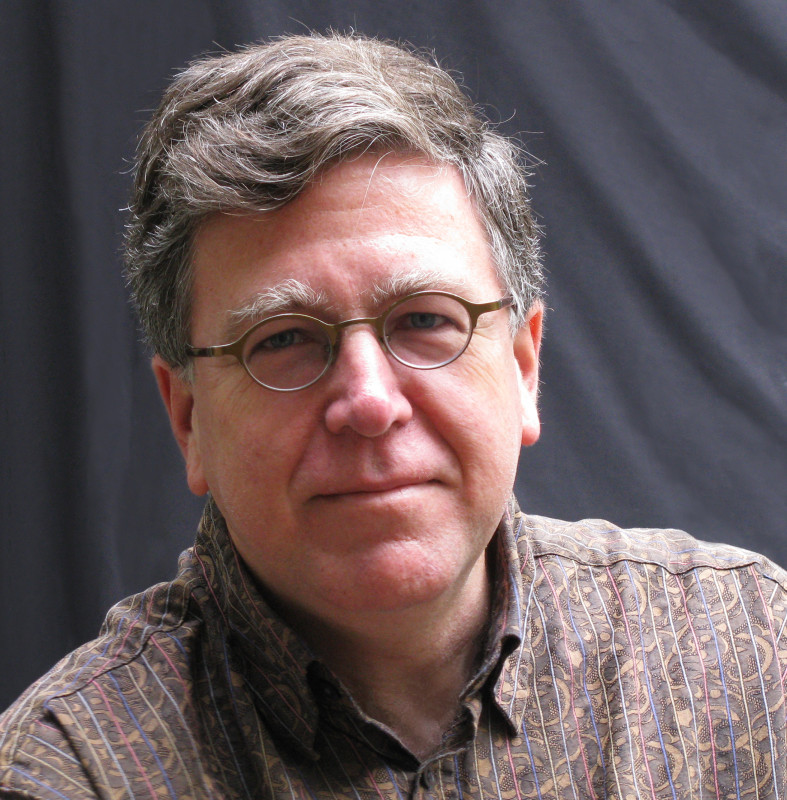Writers start with a blank page. Even if the writer has an idea, there is nothing there yet, only aspiration. The writer must put down the first word. And every word after that requires another act of faith. Fiction writing is a horse galloping out of the fog. We may think and plan and sketch. But every time the writer comes to the page, she wonders if she can corral that horse and ride it down. A metamorphosis occurs—from concept to expression—and the mind isn’t fully in control of what it is doing, doesn’t know what it has, until it’s written. And then after it’s down on the page, the horse must charge off it and into the reader’s mind. It’s not enough to put words down, to tame them momentarily, long enough to arrest them. The words must retain a quivering sense of aliveness.
I’m writing my third novel and this time around I’m mostly riding solo. I’m not in a writing group with an established novelist guiding discussion. A friend and I take turns reading to each other from our manuscripts every Friday afternoon, but we are both still learning. Even after publishing two novels, it still feels this way.
I begin a novel with place. Usually, I have some idea about a protagonist, always a searcher. Pretty soon, I have a question: “What would happen if . . .?” With my first novel, I knew what my protagonist had done because the story was inspired by a real woman. In 1853, a wealthy daughter of a Georgia planter had hastily married a former Texas cavalryman-turned-missionary and gotten on a boat bound for West Africa to join his mission. My question then was “Why?” Was she running away or toward something? Was she full of faith or full of doubt?
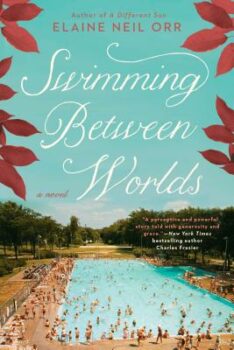 With my second novel, I had a place (Winston-Salem, North Carolina) and a year (1960), and pretty quickly, I conjured a character. But I didn’t know enough to ask “What if” until I did a google search and learned about a lunch counter sit-in at a downtown Woolworth that year. Suddenly, I had a conflict. A question emerged: “What if a young white favorite son of the town got involved?” That required a second question that set me on my course: “What would have happened in this young man’s life that would make it plausible for him to get involved?”
With my second novel, I had a place (Winston-Salem, North Carolina) and a year (1960), and pretty quickly, I conjured a character. But I didn’t know enough to ask “What if” until I did a google search and learned about a lunch counter sit-in at a downtown Woolworth that year. Suddenly, I had a conflict. A question emerged: “What if a young white favorite son of the town got involved?” That required a second question that set me on my course: “What would have happened in this young man’s life that would make it plausible for him to get involved?”
I started my third and current novel with a work of art that I found in my local museum. For reasons I can’t explain, a question came to me: “What if this two-thousand-year-old terra cotta figure had turned up mysteriously, addressed to a curator at the museum who happens to be a woman?” And then a second question, arose: “How would she track its origins?” Because as it happens, this work of art is controversial for a number of reasons, among them: many such works were illegally transported out of Nigeria in the twentieth century. That added to the terra cotta’s appeal as a center piece of my story. But after I wrote eighty pages, I couldn’t figure out what would happen next. I applied for a writing residency and went back to the initial chapters, but once again I couldn’t get further. Three times I tried to write beyond page eighty and couldn’t. Finally, I decided to explore the back story, specifically the story of the curator’s mother. I took the plunge. The mother’s story took over.
That happened last April, just as we were settling into pandemic life. The story came pouring out of me. I lived in it, consumed by my protagonist—not the woman I began with, but her mother. Her story became so tantalizing that I began getting up at five thirty in the morning to write every day, even on the days I teach. And each day since, I’ve tried to muster the faith to return to it in the early morning hours.
I do so with the knowledge that I might spend years on this book and it may never be published. I spent ten years writing the first novel, with no guarantees. When I was a young assistant professor, seeking tenure, I had to publish. I knew the threshold: a book or six articles in significant journals in my field. I learned to write without guarantees. It was my job to try. Actually, it was my job to succeed. If I didn’t succeed, I wouldn’t have a job. I succeeded. But I would not call that work “writing as an act of faith.” It was writing as an act of desperation motivated by fear. I did feel passionately about the research I was doing (on American female novelists of the twentieth century). But I wrote in an unforgiving atmosphere. A clock was ticking. There was little time for experimentation, for changing one’s mind, for learning through failing.
Novel writing has been for me all about learning through failing and has become writing as faith. It’s not really the question of publication that most interests me. Or it’s not that question alone. What interests me is belief in the art before it exists, even if it isn’t published. Or belief in the process. A belief strong enough to carry the writer by her own hand from beginning to end, even when there is no end in sight until she gets there.
Once, early in my work on the first novel, I naively read an excerpt at an artist residency. A more experienced novelist kindly took me aside to tell me I had read material for a novel. I wasn’t yet writing fiction. Not having taken a single workshop in fiction writing, it was no wonder. I didn’t sign up for any workshops, though. I was a full time associate professor of literature. I didn’t have time. So I taught myself by studying other novelists—to see how they did it. “It” was everything: how you get characters into a room. How you move them around. How you get them to speak about topics that move the plot. How you build their world. How you make one scene stand for many. How you conjure the body in pain. How you get tension onto the page. That was the big one.
A writer starts with nothing and creates something.
Oh, she has words, she knows sentence structure, she has memory and has read books, she may have a poetic sensibility. I like to think I do. But she starts with a blank page and creates a world. This is especially true of novels, but it is also true of poems and plays and even sermons. Where there was nothing, a world of sense and sensibility is conjured. A conflict is encountered and resolved, or not. Lives come into being. In memoir, one’s own life is composed so that it becomes something new, never encountered before. Otherwise, it’s just a journal of events.
 Attempting that first novel, I had a writing group with a novelist leading, a friend, someone I trusted, who was a wise teacher. We met at her house and took turns reading pages aloud to one another. Everyone’s response mattered. But her response was what guided me. At that point, I had published a memoir and been promoted to full professor. I didn’t have to publish the novel I was beginning to scratch out. I could write a few essays here and there and luxuriate in being tenured. That was what freed me to attempt it.
Attempting that first novel, I had a writing group with a novelist leading, a friend, someone I trusted, who was a wise teacher. We met at her house and took turns reading pages aloud to one another. Everyone’s response mattered. But her response was what guided me. At that point, I had published a memoir and been promoted to full professor. I didn’t have to publish the novel I was beginning to scratch out. I could write a few essays here and there and luxuriate in being tenured. That was what freed me to attempt it.
The novel was set on two continents in the mid-nineteenth century. To write it, I had to learn several worlds: the world of an enslaved African in Georgia in the early nineteenth century; the world of the white family who owned him (which included my protagonist); the world of a Texas cavalry man; the world of missionaries in West Africa in the 1850s, and the world of Yoruba people in the mid 1850s in current day Nigeria. The novel was the largest creative project of my life.
I had an enormous amount of scaffolding beneath me. I had learned to do deep research as a Ph.D. student and in my first two books of literary criticism. I had grown up in Nigeria. But to go from material to fiction was leaping into air. It was throwing a hook into clouds and believing it would hold.
Faith is belief without proof, without guarantee.
Now, every morning when I get up at five thirty, I believe I can get a few more words on the page. Analogies come to mind: building blocks, for example. Aren’t I just stacking blocks? Henry James said a novel should be built “brick on brick.” He meant there shouldn’t be great gaps in the story. But the analogy doesn’t work entirely. Writing is more like alchemy. Words are like smoke. They hardly exist. We hear sounds. We put marks on a page and call them words. But as Ferdinand de Saussure taught us, meaning is created through difference. Every word (he called them signs) is not another word and every word in a sentence is fulfilling a different function: subject, verb, adjective, article, adverb, and so on. Meaning is made through differences among signs in a system. But putting one word after another takes belief. It is an act of faith to write a sentence, this sentence.
What kind of faith did William Faulkner have when he wrote: “My mother is a fish”? Or these lines about a flooded river, which are also from As I Lay Dying:
Through the undergrowth it goes with a plaintive sound, a musing sound; in it the unwinded cane and saplings lean as before a little gale, swaying without reflections as though suspended on invisible wires from the branches overhead. Above the ceaseless surface they stand—trees, cane, vines—rootless, severed from the earth, spectral above the scene of immense yet circumscribed desolation filled with the voice of the waste and mournful water.
What compels a writer to create a sentence and another one and another one, knowing it might take an entire novel for all of them to make sense? What kind of faith does the writer possess to move across all that choppy water to get to the other side in order to understand the middle where the catastrophe occurred?
(I don’t know, writing this essay, if I’m going to make it across.)
Yet even the idea of a pyramidal line through the novel, what Aristotle called plot and editors and agents call the “arc” (that every writer must have, by the way) is misleading. We don’t write in a straight line. But we do, in some sense, write from beginning to end. Maybe we throw a pebble into a pond and the novel ripples out on all sides. But somehow those ripples have to be caught in a net. You can see the impossibility of that. The water will flow right through. And yet, this is, I suspect, an apt metaphor for writing: gathering water with a net; capturing the ripple effect that goes outward in every direction but creating the illusion of an odyssey, a journey, a beginning, middle, and end. Because art is not like life. Novels are not like life. Novels are like other novels. And each one that matters is somehow different because of the writer’s faith in her own imagination.
The writer is the originator of the news of the novel, the something new it has to tell. But the writer can write because other writers write. It takes a community to write a novel even if I do it solo. I’m in a room full of books.
Which brings me back to writing at five thirty in the morning. I joined the #5amwriters Twitter group. When I start writing between five and six, I know other writers are writing. We’re in this together. We’re like a church. We have belief, not in ourselves, but in the work.
Here is Lily in Virginia Woolf’s To the Lighthouse, when, after a passage of years and a war, she comes back to an unfinished canvas and finishes it:
Quickly, as if she were recalled by something over there, she turned to her canvas. There it was—her picture. Yes, with all its greens and blues, its lines running up and across, its attempt at something. It would be hung in the attics, she thought; it would be destroyed. But what did that matter? she asked herself, taking up her brush again. She looked at the steps; they were empty; she looked at her canvas; it was blurred. With a sudden intensity, as if she saw it clear for a second, she drew a line there, in the centre. It was done; it was finished. Yes, she thought, laying down her brush in extreme fatigue, I have had my vision.
I first read To the Lighthouse as a Ph.D. candidate who was the mother of a two-year-old, who suffered from difficult-to-manage diabetes, who was attempting to become a feminist critic in a world often hostile to my work. I was awe-struck by this passage, by Woolf’s own doubt: perhaps her novel would be stuffed up in an attic. But no. Of course it was not. And what would it matter? Like Lily, she had had her vision.
It’s spring here in North Carolina. I’m not sure I can claim with Aristotle that art is an improvement on nature. An improvement on the dogwood flower? No. An improvement on human nature, perhaps. But that’s not what I’m driving at. What I am driving right into is the idea of faith. Not faith in salvation from error but faith in living, in being, in giving shape to my own imagination, in shaping what Virginia Woolf called “moments of being.” On the page. Believing that there’s something stirring in me worth bearing witness to. I “saw it clear for a second,” that magnificent horse galloping out of the fog. I slashed it down on the page.

